Key takeaways:
- Understanding user personas is vital for creating user-centered web designs, as they reflect real people’s motivations and pain points.
- Key components of user personas include demographics, psychographics, user goals, pain points, and behavior patterns, which drive design decisions.
- Creating dynamic personas through thorough research and ongoing feedback is crucial for adapting designs effectively and enhancing user experiences.
- Applying user personas in design requires thoughtful iterations that align features with user values, fostering strong connections and loyalty.
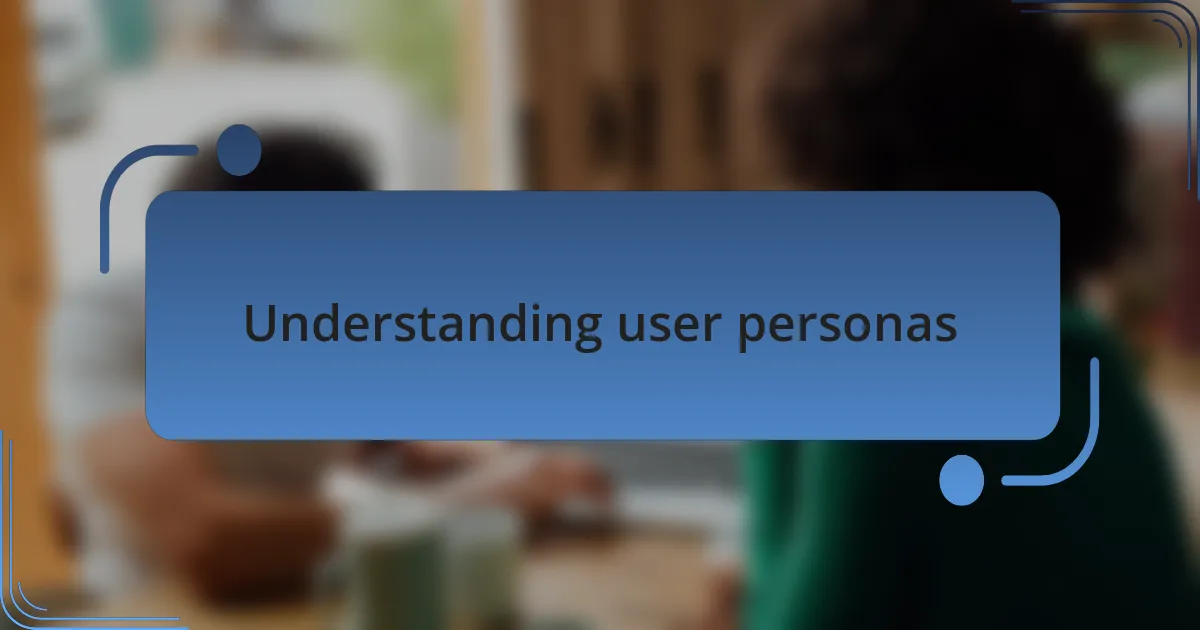
Understanding user personas
Understanding user personas is crucial for effective web design because they provide a human element that guides decisions. I remember a project where we crafted detailed personas based on user interviews. One persona stood out: a busy mom juggling work and family. Knowing her time constraints helped us design a streamlined navigation that prioritized efficiency.
Creating user personas involves synthesizing data into relatable characters, and this process can be incredibly eye-opening. Have you ever considered how different age groups interact with technology? When I tailored a persona for a tech-savvy teenager, it became clear how vital fast-loading pages and vibrant visuals were to keep their attention. It was a revelation that shaped our entire design approach, ensuring we met their expectations.
These personas aren’t just fictional characters; they reflect real people with diverse motivations and pain points. In my experience, diving deep into their aspirations can change the way we approach design. For instance, understanding a persona’s desire for seamless accessibility led us to prioritize mobile optimization, creating a more inclusive user experience. If we focus on these insights, we not only design for usability but also foster a connection between users and the website.
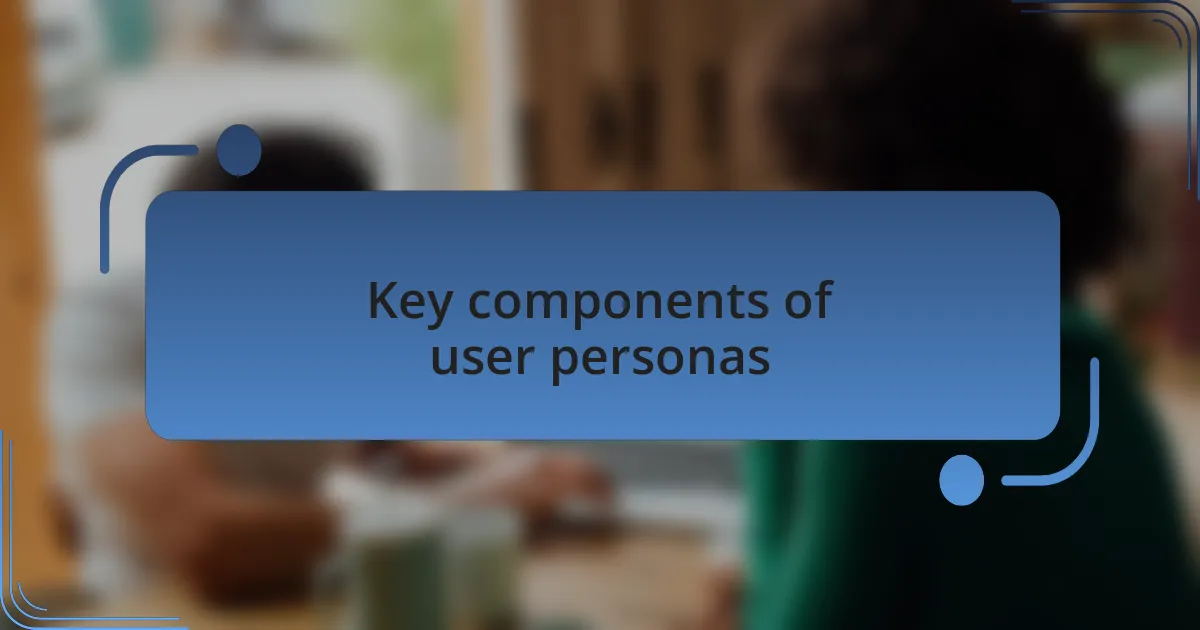
Key components of user personas
Key components of user personas encompass essential elements that truly bring these characters to life. Basic demographics like age, gender, and location are vital, but I’ve found that including psychographics—such as interests, values, and lifestyle choices—really adds depth. For instance, I once developed a persona reflecting an environmentally conscious individual, which prompted our team to consider sustainable design practices, highlighting the importance of aligning our work with user values.
Another core component is understanding user goals and pain points. I vividly recall when we mapped out the frustrations of a first-time visitor to our site. We learned that they craved clear guidance and comprehensive FAQs. This revelation not only reshaped our content but transformed how we structured our site’s navigation, resulting in an uptick in user satisfaction—a true win-win for us and our audience.
Finally, diving into user behavior patterns is crucial for building effective personas. I often analyze how specific user groups interact with features like chat support or product filters. During a web project, analyzing these behaviors revealed that certain users preferred visual search over traditional text-based search. This insight led us to revamp our search functionality, creating a more engaging and intuitive experience. Isn’t fascinating how understanding our users can lead to such impactful changes?
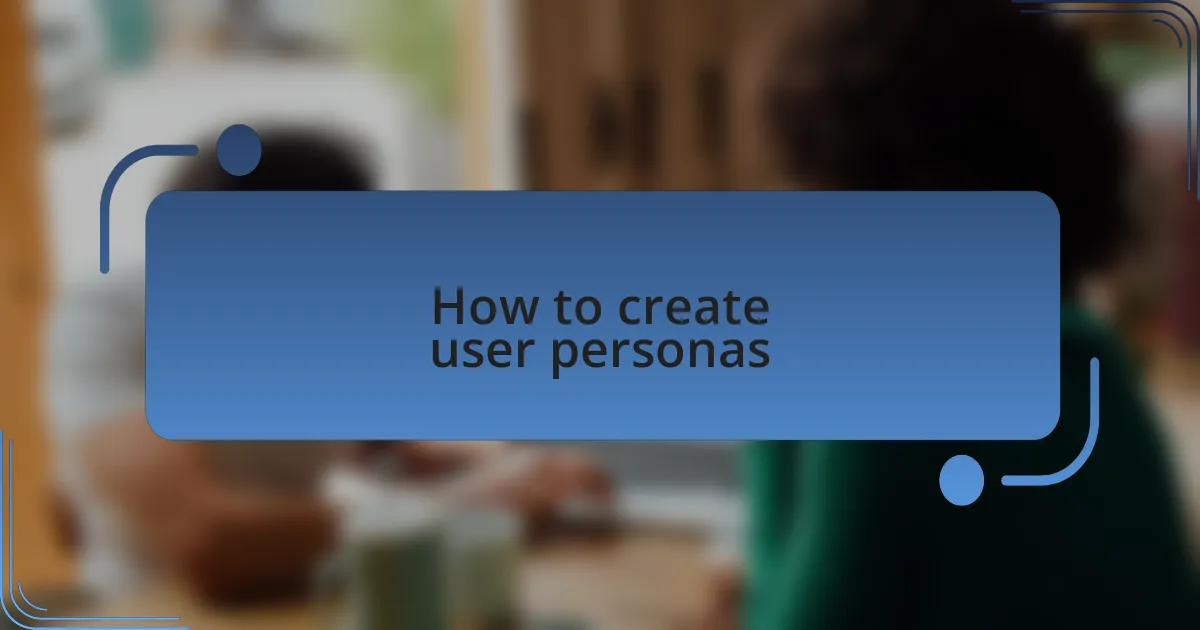
How to create user personas
Creating user personas begins with thorough research. In my experience, combining quantitative data from analytics with qualitative insights from user interviews yields the best results. I remember a project where we conducted interviews with three different user types; their stories illuminated pain points and needs we hadn’t considered, shaping our design choices profoundly.
Next, I believe it’s crucial to distill this information into clear, concise personas. For example, after gathering data, I often create a one-page summary for each persona, including their quote, goals, and challenges. Some might wonder if this is too simplistic, but I’ve found that having a visual reference helps the entire team stay aligned and focused on user needs throughout the design process.
Finally, I can’t stress enough the importance of keeping these personas dynamic. After launching a website, I always revisit the personas based on user feedback and behavior analytics. I clearly recall a time when user feedback led us to modify a persona, which then influenced a redesign that significantly improved our conversion rates. Doesn’t it make you curious how evolving your understanding of users can spark transformative changes?
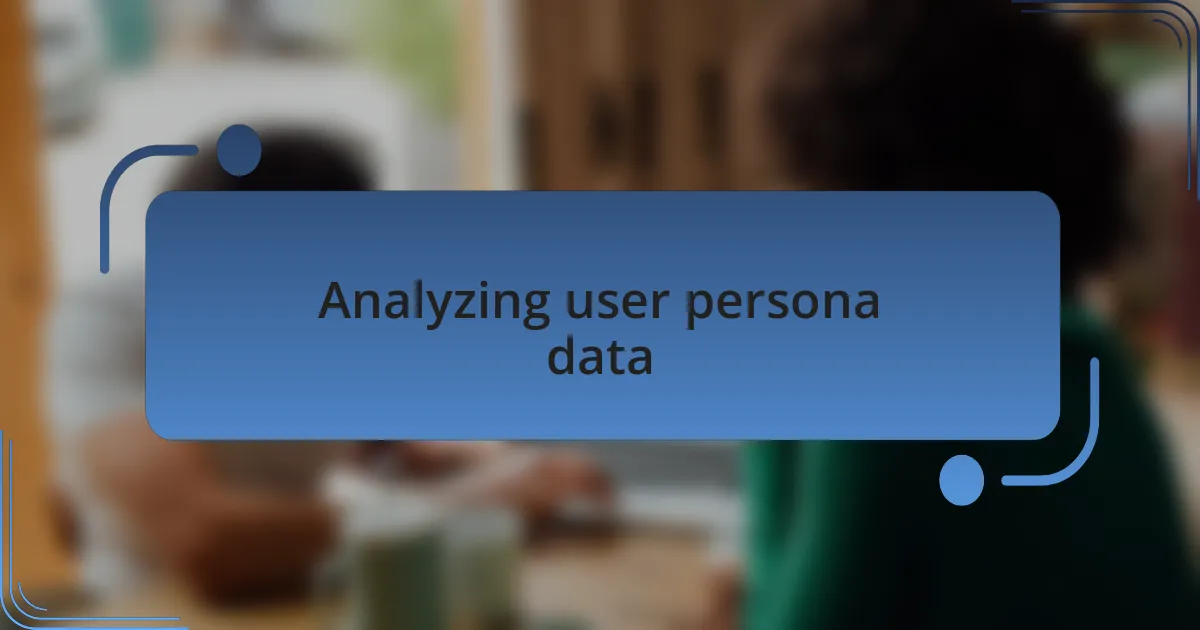
Analyzing user persona data
When I delve into analyzing user persona data, I often start by comparing the initial assumptions we had about users with real user interactions. I remember a time when we expected our primary user to be tech-savvy based on demographic data, but user behavior indicated that many of them were struggling with basic navigation. This realization challenged our design direction and highlighted the need to simplify our interface significantly. Isn’t it fascinating how assumptions can lead us astray?
Another critical aspect is segmenting the persona data into actionable insights. I’ve found that crafting detailed user journeys based on this analysis helps pinpoint specific touchpoints that resonate emotionally with users. For instance, when I mapped out the journey for one of our users, I was struck by how a single empathetic moment—like personalized support—could transform their experience. How often do we overlook the small details that make the biggest impact?
As I refine my analysis, I always ask myself, “What stories are hidden within these numbers?” Recently, I analyzed user feedback that uncovered a common frustration about our checkout process. This insight wasn’t just data points; it was a call to action that spurred a collaborative brainstorming session, ultimately leading to a redesign that reduced cart abandonment significantly. This kind of discovery makes the process of analyzing user persona data not just informative, but also incredibly rewarding.
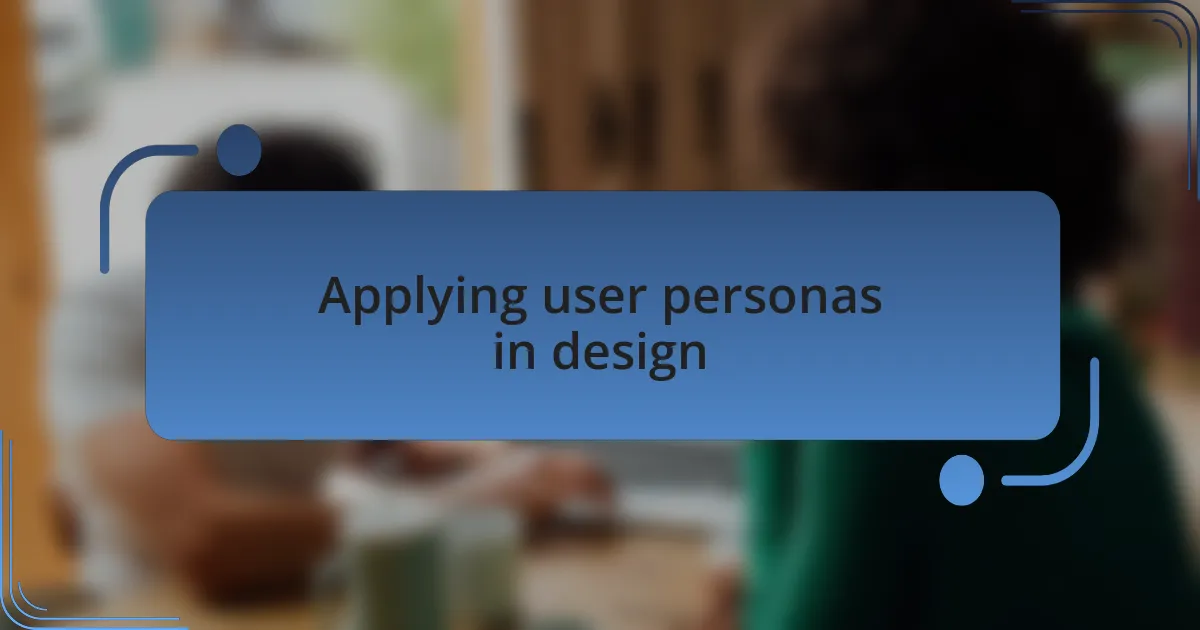
Applying user personas in design
When applying user personas in design, I often find myself stepping into the shoes of each persona as I iterate on our website’s features. For example, I once worked on a project where our primary persona needed quick access to information. By simplifying the navigation based on their preferences, we not only improved usability but also received feedback that users felt more in control of their experience. Isn’t it amazing how a thoughtful change can resonate so deeply with our audience?
One particularly memorable application of user personas happened during a redesign of an e-commerce website. We identified a persona who valued sustainability and ethical sourcing. Incorporating this insight, I worked on highlighting ethical products prominently and shared their stories. The feedback was incredible—users felt a connection to the brand and expressed gratitude for making their ethical values visible in a way they could easily navigate. Have you ever considered how aligning design with user values can foster loyalty?
I also learned the importance of continually revisiting user personas throughout the design process. As our understanding deepened, I remember implementing feedback loops to test design assumptions with real users in mind. This iterative process allowed our team to adapt quickly—like the time we adjusted a feature after realizing our older persona found it confusing. It’s moments like these that reinforce the notion that user personas aren’t just a step in the design process; they are the lifeline that keeps our design efforts user-centered. How often do we remember that it’s not just about the aesthetics, but about creating meaningful connections?